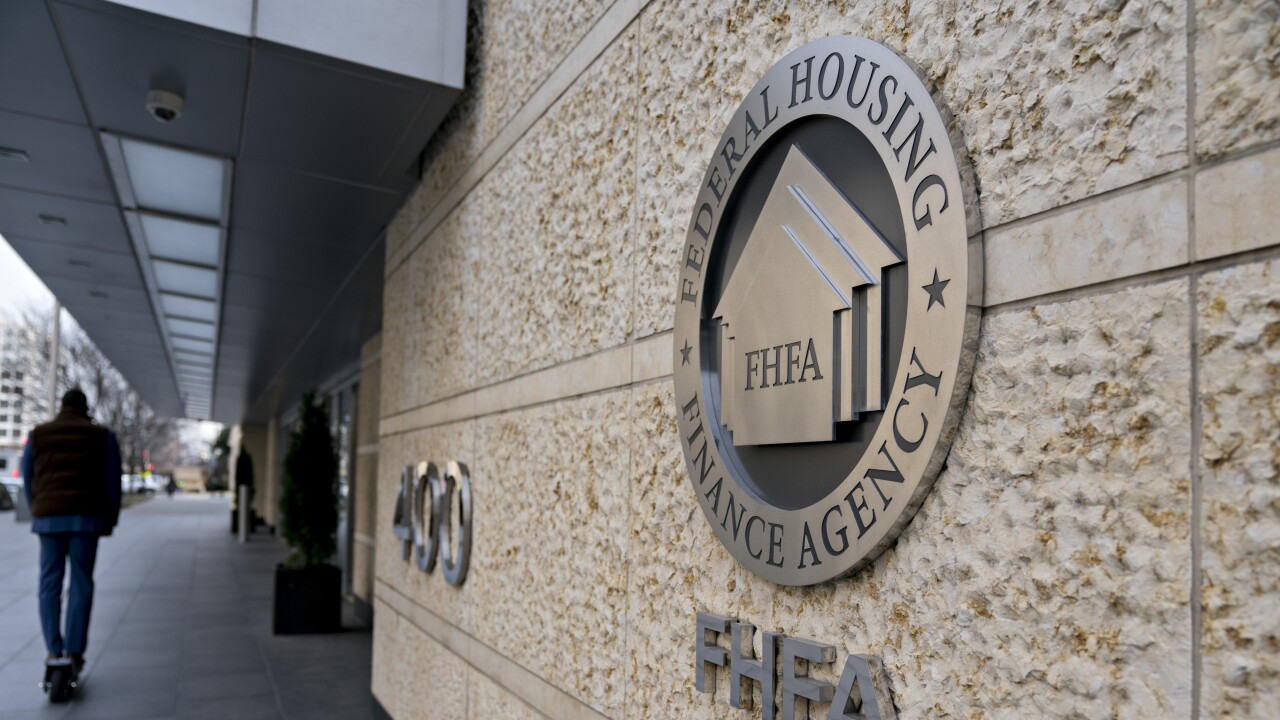Capacity constraints among mortgage lenders are leading to wider spreads between mortgages and the 10-year Treasury yield even after it remained below 1% for an extended period this week.
As a result, mortgage rates have stayed flat or even been raised at some lenders. Originators have been overly busy in recent weeks, and higher rates are a tool to manage the flow of business.
The average rate quote on Zillow for a 30-year fixed mortgage on March 5 was 4.42%, a 3-basis-point increase from the previous day's 4.39%.
"If Treasurys continue to fall, the increase in the risk premium will likely dictate the floor for 30-year mortgage rates, as the same forces driving down Treasury yields will drive up concerns of risk to the overall economic situation, as well as the housing market," Ruben Gonzalez, chief economist at Keller Williams, said in a statement. "In the near term, lower rates should provide a boost to demand while inventory remains low across the country."

Churchill Mortgage, headquartered in Brentwood, Tenn., had its best year ever in 2019, and this year is shaping up to be even better, said CEO Mike Hardwick.
This January was the best for that company in its 28-year history and the same was true for February. Then came March 3, the day before the Federal Open Market Committee
"Monday was off the charts amazing. We locked on Monday almost $90 million of loans," Hardwick said, adding it was a single-day record at Churchill.
"I think it's going to continue that way. I really believe rates are going to stay where they are and possibly, probably, maybe a little bit more. I don't know how they can dip a lot more," he said.
Fannie Mae Chief Economist Doug Duncan agreed. "Whether spreads are going to come in to reflect that 0.9% 10-year, I am doubtful. In fact, it looks like they're still quite wide.
"That makes sense in the sense that there's no way the industry has the capacity to suddenly, even potentially, introduce a new coupon which makes all outstanding mortgages in the money [to refinance] if spreads normalize," Duncan said. Those spreads are likely to stay wider for a while, but that doesn't not mean that a lot of people will not be able to refinance their mortgage.
Whether the Fed had to act is an open question. "Cutting interest rates won't heal the supply chain, and so that sort of leaves the immediate question of was this a matter of psychology, are they trying to build confidence? It's not clear it does that either, because it seems like a quick reaction to current events," Duncan said.
Besides pipeline constraints, another reason why mortgage rates have not moved down as fast as the yields was that "spreads on mortgage-backed securities relative to Treasurys which increased last week but are starting to close this week," said Freddie Mac Deputy Chief Economist Len Kiefer. "Over time I expect to see movements in the 30-year mortgage rate that consumers see to align more closely with 10-year Treasury yields."
Kiefer's statement was made before Freddie Mac released its weekly survey that found the average rate for the 30-year fixed product
Still, while the average for the 30-year FRM was down 16 basis points from the previous week, the 10-year Treasury yield was down 40 bps.
It is turning into an unprecedented
But consumers need to remain patient about getting their requests fulfilled.
"The analogy I would use is this: when you are using shared Wi-Fi at an airport, sometimes speed can be slowed because everyone around you is trying to use the same services. This market is unpredictable, but upcoming capacity demand for refinance may create a similar, slowed experience," Hsieh said.





